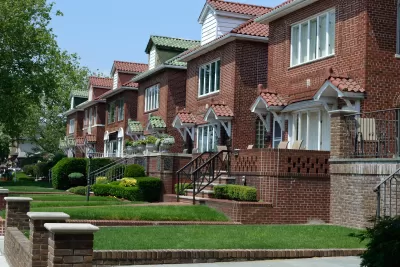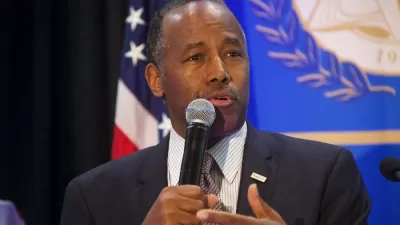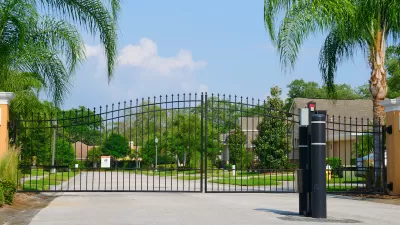The Trump administration’s talk about protecting the suburbs is based on misrepresentations of who really lives in suburbs and what these communities need.

"Given the scale of American suburbia, talking about 'the suburbs' writ large invariably papers over the differences that exist across this spectrum of communities, which range in population (from fewer than 100 residents to hundreds of thousands), location (from streetcar suburbs to exurbs), and built environment (from strip malls and subdivisions to dense, walkable downtowns)," writes Elizabeth Kneebone.
In addition, suburbs are diverse in terms of income, race, and ethnicity, but this does not mean all suburbs are equal. Exclusionary zoning and land use regulations have resulted in significant inequities. “These practices have allowed certain jurisdictions and neighborhoods to hoard wealth and opportunity, fueling racial and economic segregation and creating disparities not only between suburbs and cities but also within suburbia as well,” Kneebone.
In addition, the kind of suburbs touted by President Trump and Ben Carson—filled with single-family homes and with high average household incomes and low poverty rates—make up just one-fifth of suburban neighborhoods.
"Trump and Carson denigrate 'urban cities' by writing that they often struggle to 'provide for their citizens’ basic needs in housing, public safety and education'—but that is also the reality for many small, resource-strapped suburbs scattered across the fragmented patchwork of suburban America," says Kneebone.
They should instead, she argues, focus on policies and programs that will help people living in suburbs. Rent relief, tenant protections, and federal aid to states and cities are what is needed to bolster the suburbs that Trump and Carson allegedly want to save.
FULL STORY: Trump is clinging to an outdated vision of America’s suburbs

Planetizen Federal Action Tracker
A weekly monitor of how Trump’s orders and actions are impacting planners and planning in America.

Map: Where Senate Republicans Want to Sell Your Public Lands
For public land advocates, the Senate Republicans’ proposal to sell millions of acres of public land in the West is “the biggest fight of their careers.”

Restaurant Patios Were a Pandemic Win — Why Were They so Hard to Keep?
Social distancing requirements and changes in travel patterns prompted cities to pilot new uses for street and sidewalk space. Then it got complicated.

Platform Pilsner: Vancouver Transit Agency Releases... a Beer?
TransLink will receive a portion of every sale of the four-pack.

Toronto Weighs Cheaper Transit, Parking Hikes for Major Events
Special event rates would take effect during large festivals, sports games and concerts to ‘discourage driving, manage congestion and free up space for transit.”

Berlin to Consider Car-Free Zone Larger Than Manhattan
The area bound by the 22-mile Ringbahn would still allow 12 uses of a private automobile per year per person, and several other exemptions.
Urban Design for Planners 1: Software Tools
This six-course series explores essential urban design concepts using open source software and equips planners with the tools they need to participate fully in the urban design process.
Planning for Universal Design
Learn the tools for implementing Universal Design in planning regulations.
Heyer Gruel & Associates PA
JM Goldson LLC
Custer County Colorado
City of Camden Redevelopment Agency
City of Astoria
Transportation Research & Education Center (TREC) at Portland State University
Camden Redevelopment Agency
City of Claremont
Municipality of Princeton (NJ)





























